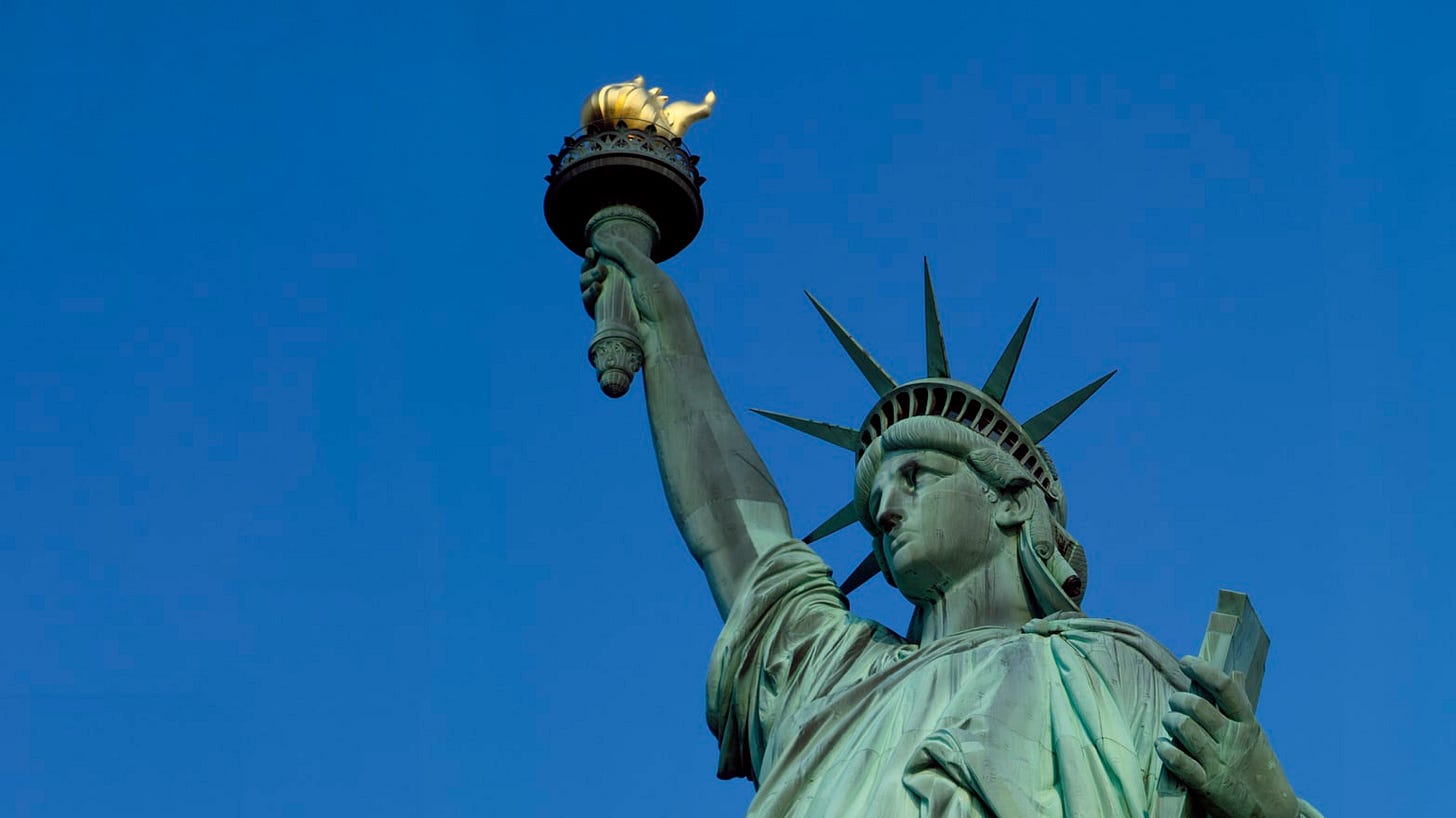What Trump Doesn't Get about the Statue of Liberty
It's a monument to slavery’s end and the rise of a liberal democracy.

I’m late to this, so you’ve seen by now plenty of commentary about Ken Cuccinelli’s rewrite of the poem etched on the base of the Statue of Liberty in New York Harbor.
The government’s top immigration official said last week that Emma Lazarus’s famed lines about “huddled masses yearning to breathe free” were not about immigrants the world over but instead white Europeans “who can stand on their own two feet.”
Editor’s note
Hiya! Today’s edition goes out to everyone. But please, pretty please, if you can afford to, subscribe ($6/mo.) and support my work! Just click on the red button. Many thanks! —JS
This, naturally, set off salvos of outrage, not least because the government policy Cuccinelli was announcing was proof that Donald Trump’s real goal is policing authorized immigrants, not just unauthorized ones. I’m not going to add to the pile. Instead, I see this as a movement to talk about history and about American democracy, but especially what the Statue of Liberty was originally intended to memorialize.
The man who came up with the idea of the Statue of Liberty was Edouard de Laboulaye. He was one of the most prominent French liberals of his time (1811-1883), in large part because of the setting in which he was working: the tyrannical regime of Napoleon Bonaparte III. The nephew of the original Napoleon, Bonapart III rose to supreme power in the bloody aftermath of the French Revolution. His government was something new at the time, but familiar to us today. It was a collectivist police state, authoritarian but democratic. Worse, to liberals like Laboulaye, it was also popular.
To French liberals, the US Civil War proved something they had faith in but had never seen.
To Laboulaye and other liberals, Bonaparte’s dictatorship illustrated a fundamental flaw in democracy—its tendency toward despotism. While he suppressed dissent and jailed rivals, the emperor subsidized bread, funded festivals, and provided tax credits for housing. To Laboulaye, the problem wasn’t so much about democracy (liberals had come to terms with it). The problem, or rather the question, was how to liberalize it.
What did that mean?
Liberal democracy called for representative government balanced with individual freedoms, specifically the right to speech, press, assembly and religion. But Laboulaye and his network of associates were not laissez faire liberals. They were republican liberals (with a small “r”). Rights and freedoms were never for their own sake. They were primarily instruments by which the people of a nation morally improved themselves and their communities. “To improve himself, even at the cost of suffering,” Laboulaye wrote, is how to fight greed and corruption, and ultimately liberalize democracy.
For a model, they looked to Abraham Lincoln (among others). From the point of view of French liberals living in an authoritarian regime, the 16th president seemed to possess ideal character. This admiration was rooted in his abolitionism. They were flummoxed by a nation founded on equal parts human dignity and human bondage. With Lincoln, they saw a moral leader who could finally prove their argument.
“Could Americans dedicate themselves to such a noble ideal as the abolition of slavery and pursue it to end?” wrote the peerless Helena Rosenblatt in The Lost History of Liberalism, from which I am drawing all this history. “Were they capable of sustained courage, patriotism, and self-sacrifice. Through his inspired leadership, Lincoln proved that they could. Under the right leadership, a liberal democracy was possible.”
To liberals, the American Civil War proved something that they had faith in but had never seen—greed, stupidity, decadence, and moral decay being overcome in order to build “the most inspiring and most promising idea of modern Christian civilization—the true brotherhood of man,” wrote American liberal Charles Eliot Norton in 1865, the year the war ended. “That same year,” Rosenblatt wrote in her book, “Laboulaye conceived the idea of a monument to the United States—the Statue of Liberty.”
The meanings of monuments change over time. The Statue of Liberty has come to symbolize the United States as a beacon of hope to the world’s persecuted and poor. That alone is reason for outrage over Ken Cuccinelli’s rewrite of Lazarus’ poem.
But as we face a 21st-century variation of Bonapartism, it’s good to remember what Laboulaye intended to celebrate—slavery’s end and the rise of liberal democracy.
—John Stoehr


